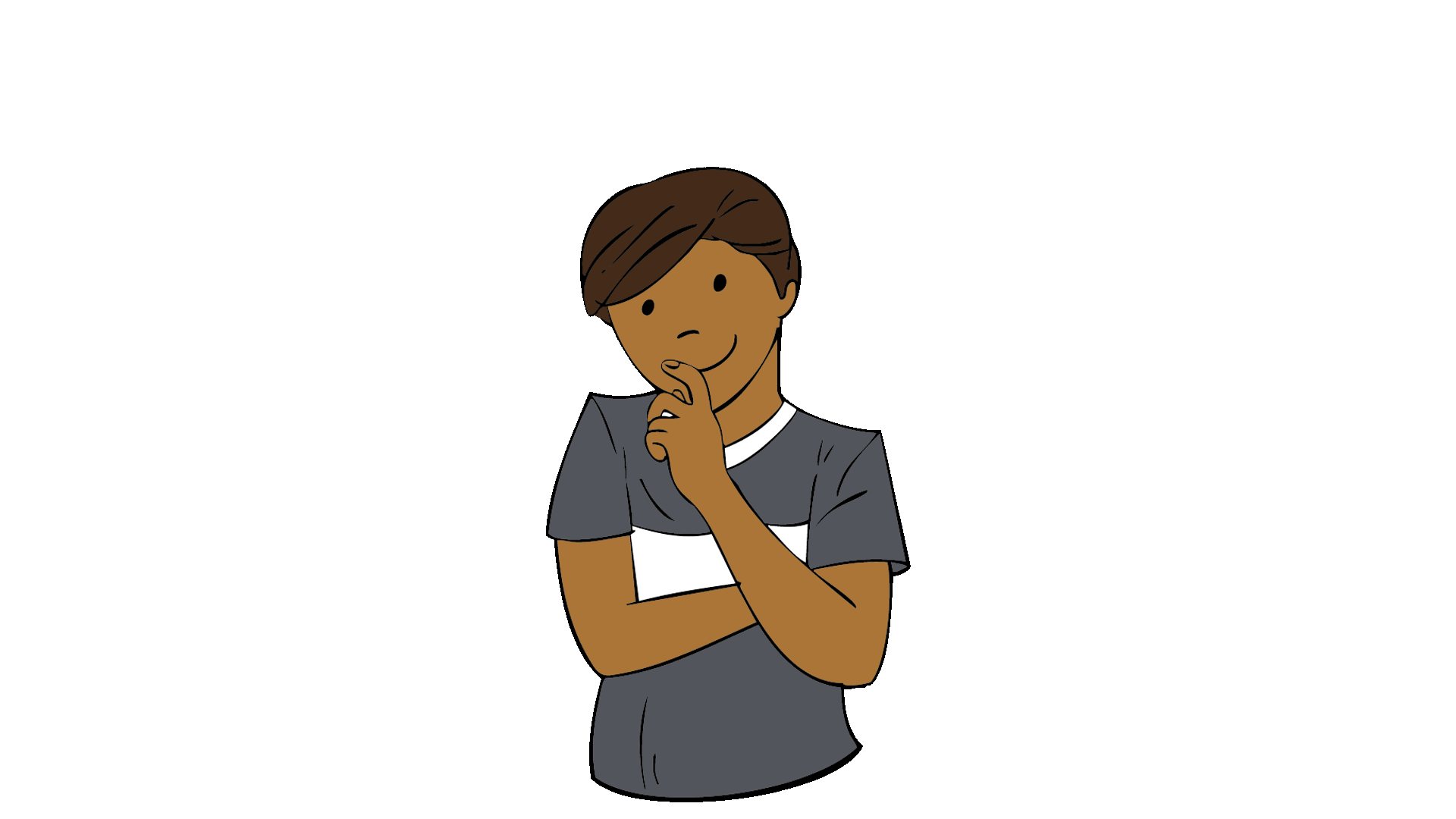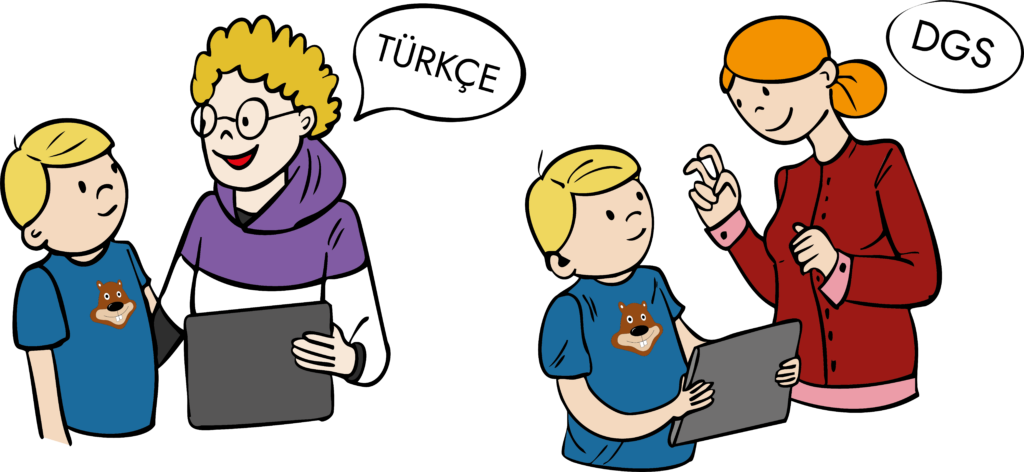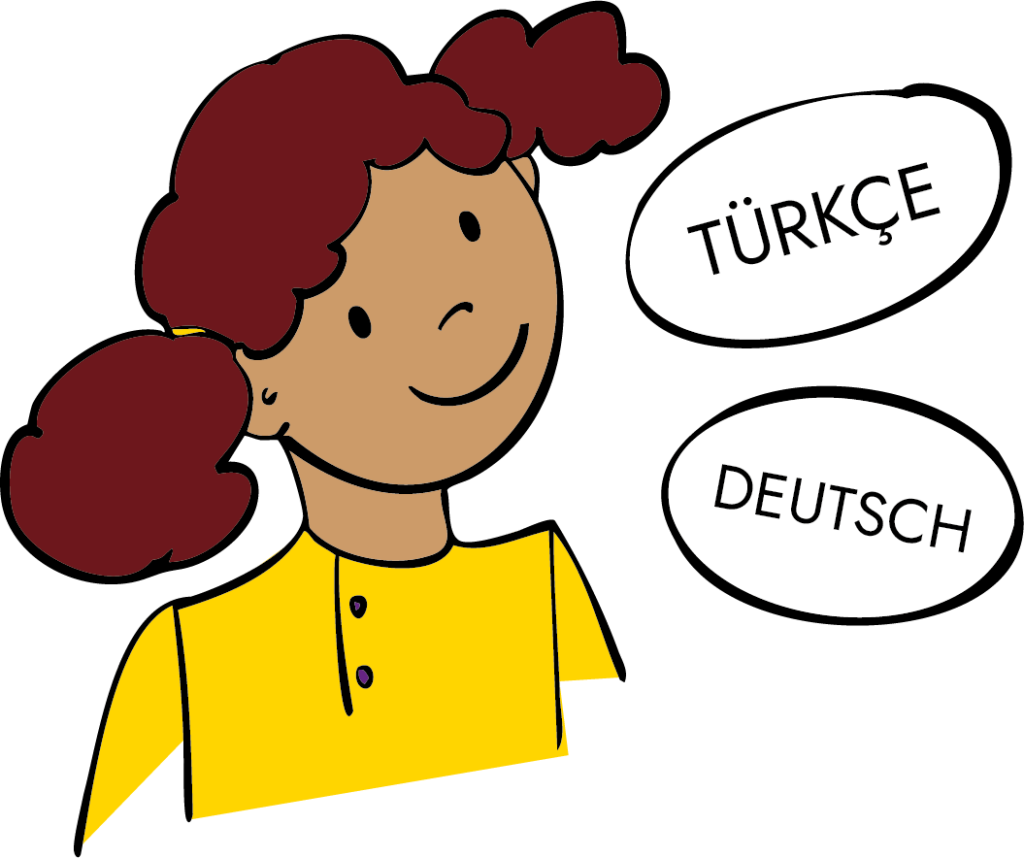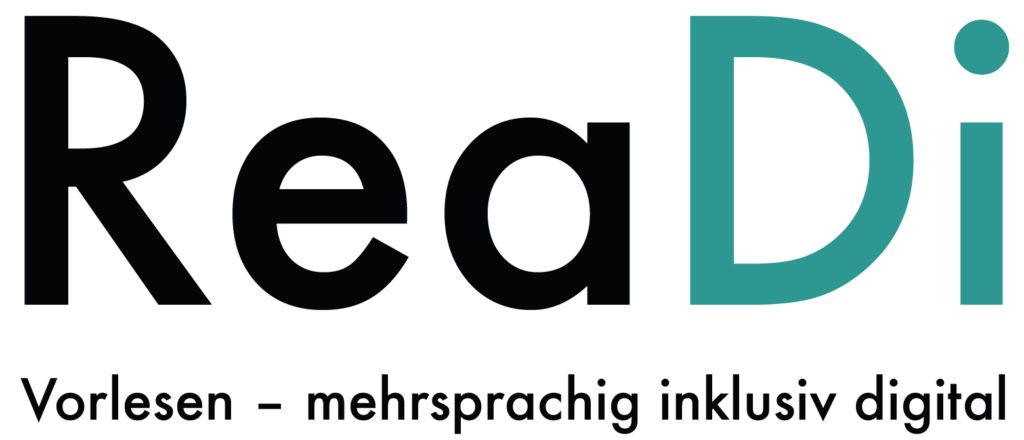Tutorial 5
Shared reading in multiple languages
For children growing up in multilingual households, it is important to decide in advance which language(s) you wish to use during your reading session.
Children grow up multilingually if they use or learn German and DGS in their everyday lives. They may also be growing up with two or more sign languages or spoken languages.

Choice of language
When reading with deaf or hard of hearing children, the choice of language and communication method is crucial to the targeted support of their comprehension and language acquisition.
Before reading, decide which learning objectives you wish to set, and which language you wish to support. If comprehension is important to you, use the language the child is most proficient in. If you wish to encourage development of a language that is less well developed, use it with strategies to support comprehension, e.g. repeating in simple signs/words.

Choice of language

When reading with deaf or hard of hearing children, the choice of language and communication method is crucial to the targeted support of their comprehension and language acquisition.
Before reading, decide which learning objectives you wish to set, and which language you wish to support. If comprehension is important to you, use the language the child is most proficient in. If you wish to encourage development of a language that is less well developed, use it with strategies to support comprehension, e.g. repeating in simple signs/words.
Reading aloud in one language
The advantage of reading aloud in a single language is that the child can concentrate on understanding that one language. Some children become overstretched if multiple languages are used simultaneously. There are various options for supporting children in German and DGS:

Have different languages read aloud by different staff members. For example, you read aloud in German, while a colleague uses DGS.

You could read a book first of all in the language the child understands best. Follow that by reading the same book in another language. This makes it easier for the child to understand the more difficult language. You could read a book first of all in German with LBG (signed German), followed by a reading in DGS, or vice versa. ReaDi picture books make switching between languages easy: German, DGS, Arabic, English and Turkish.
You can find further multilingual picture books here >

Use different languages in different situations: e.g. read in German for a German class, or in DGS for a DGS class.

Reading aloud in two languages
Reading aloud in German and DGS can support both languages. Use the child’s stronger language to support the language they have less command of.
Read the book in one language, switching to another language if

the child doesn’t understand and you want to ensure their comprehension,

you want to speak to the child in another language,

the child wants to use a different language to ask a question or tell you something,

you or the child don’t understand a word in one of the languages.
Multilingual reading in heterogeneous groups
Each child must be able to understand everything. Inattention helps no one. It is better to work in small groups, or even read aloud 1-1 with a child.
In groups with a range of languages and linguistic abilities, it can make sense to use German and DGS in parallel.

Multilingual reading in heterogeneous groups

Each child must be able to understand everything. Inattention helps no one. It is better to work in small groups, or even read aloud 1-1 with a child.
In groups with a range of languages and linguistic abilities, it can make sense to use German and DGS in parallel.

If you have two readers, you could read simultaneously in German and DGS, giving all the children the benefit of both languages. Agree in advance with your colleagues when you could read in pairs.

Ensure that all the children understand each other’s questions. Interpret if necessary.

Some groups may find LBG (signed German words) helpful. Be aware that children who cannot hear what is said will only perceive half of what is communicated. It would be better to read German and DGS in tandem, or work in groups of children with similar language skills, or read to an individual child, so that you can use the language which the children understand best.

Adjust your language for children with limited language skills, but be sure to stretch children with stronger abilities with more challenging tasks.

Reading aloud to multilingual groups requires linguistic flexibility, and sometimes needs extra time. Remain open to new approaches, and be courageous in trying something new if your current approach is not working.



Tasks
Tasks

Start a survey, or observe the children. Find out which language(s) they use, and which language they prefer to hear stories in. Gear your next reading session according to your findings.

In particular, plan a reading session integrating German and DGS. Practice reading in both languages with a colleague, or use interpreters.
